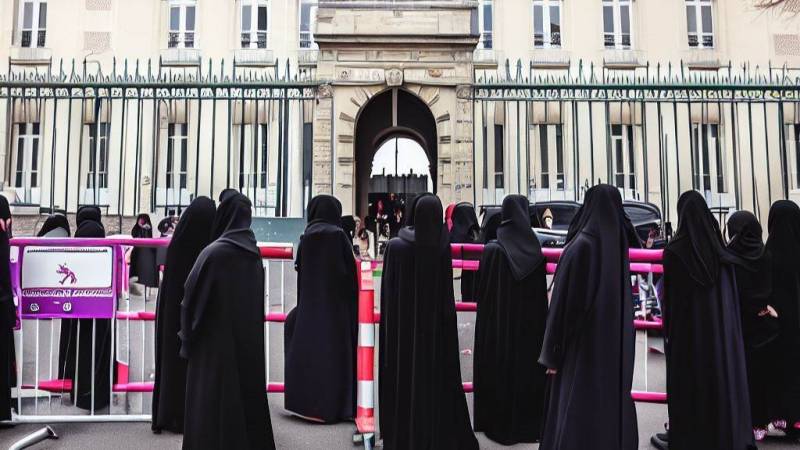As students across France eagerly return to their classrooms, a controversial ban on the abaya Muslim dress for women in schools has thrust the nation into a state of vigilance. French authorities, in a bid to uphold the principles of secularism in education, are closely monitoring 513 schools for signs of potential violations of this newly imposed ban. The announcement, which came last month, has ignited a fervent debate between political factions, with the government defending its stance while the opposition cries foul over perceived affronts to civil liberties.
Government Monitors 513 Schools for Abaya Violations
Education Minister Gabriel Attal disclosed on Monday that the government had identified 513 educational institutions that could potentially face challenges in implementing the abaya ban. In preparation for the start of the school year, meticulous groundwork has been laid to ascertain which schools might encounter issues. In an effort to ensure compliance, trained school inspectors will be stationed in select institutions. With approximately 45,000 schools and a staggering 12 million students returning to school, this development marks a significant moment in France’s ongoing secularism debate.
Debate Over Abaya Ban Sparks Political Divide
The announcement of the abaya ban has caused a deep political schism within France. While the political right has celebrated the ban as a necessary step to safeguard secularism in education, the left contends that it represents a dangerous erosion of civil liberties. Critics from the hard-left have accused President Emmanuel Macron’s centrist government of veering further to the right and attempting to compete with Marine Le Pen’s far-right National Rally.
Education Minister Attal, however, emphasized the government’s focus on maintaining a clear distinction between what transpires within the school premises and activities outside of school. He clarified that while the ban applies to students within the educational setting, it does not extend to parents accompanying their children on school outings if they choose to wear clothing with religious significance. This nuanced approach seeks to strike a balance between upholding secularism and respecting individual rights.
Balancing Secularism: Abaya Ban Draws Mixed Reactions
The abaya, unlike the headscarves and other religious symbols, had until now occupied a gray area in French schools, facing no outright ban. The 2004 law already prohibited “the wearing of signs or outfits by which students ostensibly show a religious affiliation,” which encompassed large crosses, Jewish kippas, and Islamic headscarves. However, the abaya’s inclusion in this list marks a significant shift in policy and has elicited varied responses from citizens and stakeholders alike.
As France grapples with this new chapter in its ongoing discourse on secularism, the nation remains on high alert. The enforcement of the abaya ban will undoubtedly continue to spark heated discussions, challenging the government to find a delicate equilibrium between preserving its secular education system and safeguarding individual liberties.















